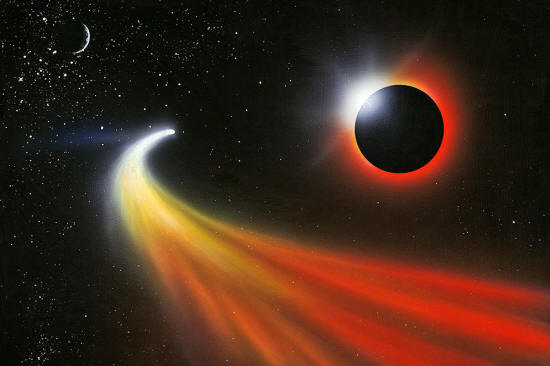|
from
NewScientist Website
Not from around these parts?
A newly discovered comet is screaming away from Earth, and based on its weird orbital trajectory astronomers think it might be the first comet ever observed that came from interstellar space.
A sky-surveying telescope in Hawaii spotted the fast-moving object, now called C/2017 U1, on 18 October (2017), after its closest approach to the sun.
During the next week, astronomers made 34 separate observations of the object and found it has a strange trajectory that is at an angle to the orbits of the planets and does not circle the sun.
Now, astronomers are hoping more skywatchers will take a look and pin down whether it's from our neighborhood or an interloper from beyond.
Most comets follow ellipse-shaped orbits around the sun, swooping in from the distant Oort Cloud to kiss the inner solar system before heading back out again.
This one, by contrast, will never return...
Its orbital path suggests it sailed in from the direction of the constellation Lyra above the relatively flat plane of the solar system (read Planet Nine may have Tilted entire Solar System except the Sun), looped around the sun, and is headed back out for eternity.
Lyra is near the direction the sun is moving within the Milky Way, says Luke Dones at the Southwest Research Institute in Boulder, Colorado.
Just popping in
Further observations in the next couple weeks will make the picture clearer.
What's more, a comet on such an extreme path doesn't necessarily have to come from interstellar space.
The comet's origins are hard to pin down in part because of the nature of comets.
This necessary guesswork makes the measurements less precise, so astronomers want lots of observations before they'll be convinced the comet really is from beyond our solar system, she adds.
Luckily, there are plenty of opportunities left to take a peek.
The comet should be visible in powerful telescopes for at least another couple weeks, allowing amateurs and professionals alike to survey the icy visitor and determine its history.
|


